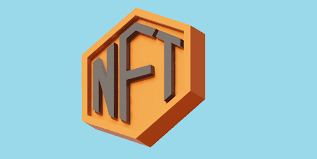Introduction
In recent years, a new and revolutionary concept has emerged in the world of digital assets and blockchain technology: Non-Fungible Tokens (NFTs). These unique digital tokens have taken the internet by storm, with high-profile sales and widespread media coverage. This article explores the origins of NFTs, their unique properties, and the impact they have had on various industries.
What are NFTs?
NFTs, or Non-Fungible Tokens, are cryptographic tokens that represent ownership or proof of authenticity of a unique item or piece of digital content. Unlike cryptocurrencies such as Bitcoin or Ethereum, which are fungible and can be exchanged on a one-to-one basis, NFTs are distinct and cannot be mutually substituted.
Unique Properties
One of the defining characteristics of NFTs is their indivisibility and uniqueness. Each NFT is associated with a specific digital asset, such as artwork, music, videos, or virtual real estate. Additionally, NFTs utilize blockchain technology, which ensures transparency, security, and immutability.
Origin of NFTs
I) Early Blockchain Art
The concept of NFTs can be traced back to the early experiments with blockchain technology in the art world. Artists began exploring the idea of creating digital artworks and using blockchain to verify their ownership and provenance. These early adopters laid the foundation for what would later become the NFT marketplaces.
II) CryptoKitties
In 2017, a game called CryptoKitties gained significant attention and popularized the concept of NFTs. CryptoKitties allowed users to collect, breed, and trade virtual cats as NFTs on the Ethereum blockchain. The game's success demonstrated the potential for unique digital assets and sparked the interest of both artists and investors.
Popularity and Impact
NFTs have gained immense popularity and have had a profound impact on various industries. Let's explore some of the key areas where NFTs have made their mark.
I) Art and Collectibles
NFTs have revolutionized the art market by providing artists with a new way to monetize their digital creations. Artists can now sell their artwork directly to collectors, eliminating the need for intermediaries. This has democratized the art world and opened up opportunities for emerging artists. Moreover, the scarcity and provenance verification offered by NFTs have brought a new level of trust and transparency to the art market.
II) Gaming and Virtual Worlds
NFTs have also found a significant presence in the gaming industry and virtual worlds. Players can own and trade in-game assets, such as weapons, skins, and virtual real estate, as NFTs. This gives players true ownership and the ability to transfer or sell their digital items outside of the game's ecosystem. NFTs have added a new dimension to the gaming experience and created new revenue streams for both game developers and players.
Conclusion
The idea of NFTs emerged from the early exploration of blockchain technology in the art world and gained momentum through groundbreaking projects like CryptoKitties. NFTs have since disrupted multiple industries, including art, gaming, and entertainment, by offering unique ownership and trading opportunities.





Comments